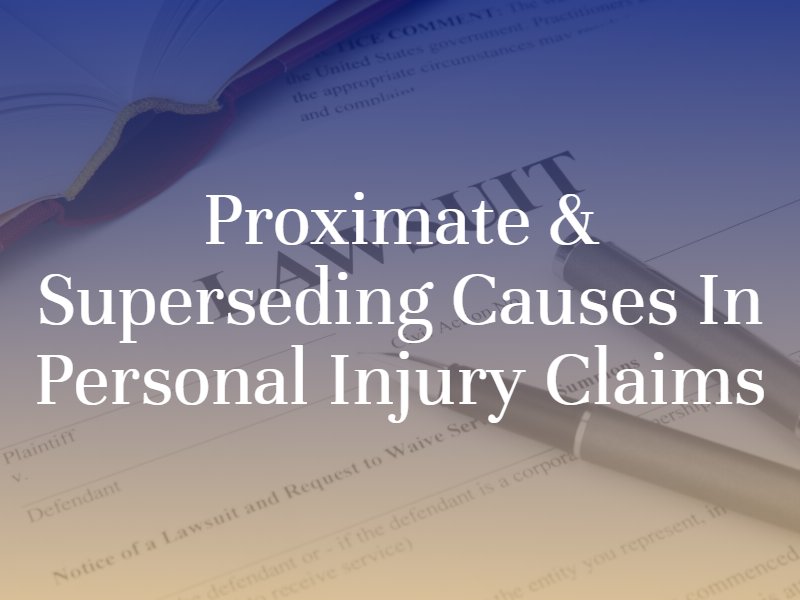
Understanding Proximate and Superseding Causes in Personal Injury Cases
Colburn Law
Posted in Personal Injury on June 5, 2020

To prove a Washington personal injury case, you will need to establish the presence of negligence in your accident. You will need to provide sufficient evidence showing the at-fault party owed you a duty of care, breached that care, and caused your injuries and damages. Proximate cause and superseding cause are two legal concepts that are necessary to establish negligence — which may interfere with each other.
What Is the Proximate Cause?
Proximate cause occurs when the at-fault party’s actions occur in an unbroken, direct sequence of events, without the presence of a superseding cause, and causes your accident or injury directly. To solidify the role of negligence in your personal injury claim, you will need to prove the at-fault party’s actions actually caused your injuries.
You will need to prove two elements to establish the presence of proximate cause.
- Cause in fact: This element refers to the connection between your injury and the conduct of the at-fault party. The injury could not have happened if not for the at-fault party’s actions.
- Legal causation: This element involves the question of the at-fault party’s responsibility for his or her conduct. If the at-fault party owed you a duty of care at the time of the accident, he or she is legally responsible for paying your damages.
Your case may involve more than one proximate cause, and as a result, your case will become more complex.
What Is the Superseding Cause?
You cannot establish proximate cause if another superseding cause is present. A superseding cause occurs if another event happened during an accident that protects the at-fault party from being liable for the injuries you sustained during the event. This cause is unforeseeable and breaks the chain of proximate cause.
Example of Superseding Cause
For example, say you are in a car accident with a driver who ran a stop sign while you were passing through the intersection. You exit the vehicle and trip over a pothole that you did not see on the roadway, breaking your leg. This would be an example of an unforeseeable superseding cause that breaks the chain of causation, and the at-fault driver in your accident would not be liable for the damages resulting from your broken leg. He or she could point to the negligence of the city government as a defense.
However, if you exit your vehicle after the same accident and another car drives by and hits you, this is not a superseding cause. It is reasonably foreseeable to the defendant that you may risk additional collisions in this situation, since you will need to exit your vehicle after an accident regardless. This scenario will not break the chain of proximate cause.
Can You File a Personal Injury Claim?
All personal injury claims rely on the presence of negligence, which involves proving proximate cause. You can file a personal injury claim if you can establish the presence of proximate cause in your lawsuit.
If a superseding event exists, you may be able to file a claim against the other party who shares liability for your injuries — personal injury lawsuits allow you to name multiple defendants. Hiring a Seattle personal injury attorney to evaluate your claim and determine your best legal options can help you determine who you can file your lawsuit against and whether or not you have grounds to file.
Contact a Washington personal injury attorney as soon as possible following your accident to determine your next steps. Your lawyer will carefully evaluate your claim and all pieces of evidence to determine your optimal pathway forward.



